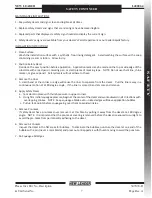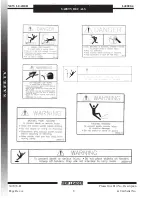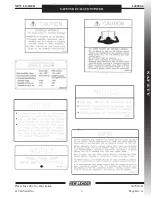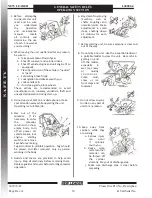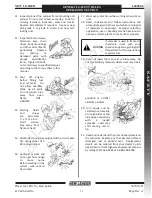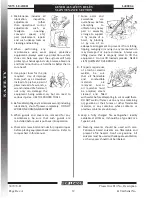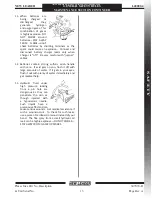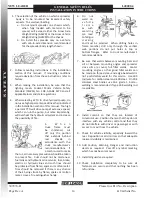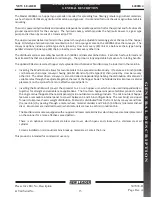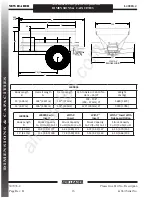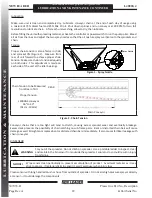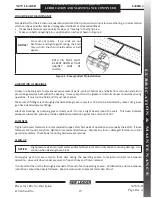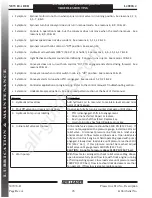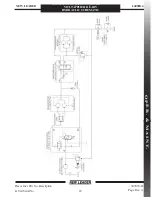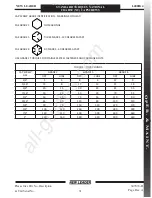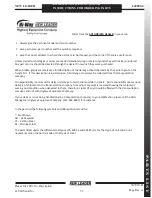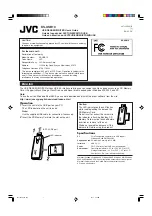
L4000G4
NEW LEADER
HEADER
21
Please Give Part No., Description
& Unit Serial No.
307074-D
Page Rev. A
LUBRICATION AND MAINTENANCE CONTINUED
HYDRAULIC HOSE
Hose assemblies in operation should be inspected frequently for leakage, kinking, abrasion, corrosion or other signs
of wear or damage. Worn or damaged hose assemblies should be replaced immediately.
WARNING
Testing should be conducted in approved test stands with adequate guards to protect the
operator.
Clean
Clean assembly by blowing out with clean compressed air. Assemblies may be
rinsed out with mineral spirits if the tube stock is compatible with oil, otherwise hot
water at 150°F (65.55° C) maximum may be used.
Inspect
Examine hose assembly internally for cut or bulged tube, obstructions, and
cleanliness. For segment style fittings, be sure that the hose butts up against the
nipple shoulder; band and retaining ring are properly set and tight, and segments are
properly spaced. Check for proper gap between nut and socket or hex and socket.
Nuts should swivel freely. Check the layline of the hose to be sure the assembly is
not twisted. Cap the ends of the hose with plastic covers to keep clean.
Test
The hose assembly should be hydrostatically tested at twice the recommended
working pressure of the hose.
Test pressure should be held for not more than one minute and not less than 30
seconds. When test pressure is reached, visually inspect hose assembly for: 1. Any
leaks or signs of weakness. 2. Any movement of the hose fitting in relation to the
hose. Any of these defects are cause for rejection.
Storage and Handling
Hose should be stored in a dark, dry atmosphere away from electrical equipment, and the temperature should not
exceed 90° F (32.22° C).
CONVEYOR CHAIN
WARNING
Stay out of the spreader. If it’s necessary to enter the spreader, return to the shop, empty
body, turn off all power, set vehicle brakes, lock engine starting switch and remove keys
before entering. Tag all controls to prohibit operation. Tags should be placed, and later
removed, only by person working in the body.
Hose down unit and remove any material build-up on sprockets and under chain.
NOTICE!
The conveyor will move away from the bottom panel if material accumulates under the conveyor or
on the sprockets. The more material that accumulates, the closer the chain will come to the chain
shields. If the conveyor should catch a chain shield, it could permanently damage the conveyor, the
chain shields or the unit. Do not remove material while conveyor or spinner is running!
O
P
E
R
.
&
M
A
I
N
T
.
L
U
B
R
I
C
A
T
I
O
N
&
M
A
I
N
T
E
N
A
N
C
E
All manuals and user guides at all-guides.com
all-guides.com

